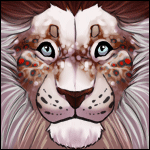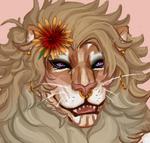

Adoption
Breeding and Bank
Events and raffle
Shop
Exploration
Archives

Sawajis are creatures that live in the wild in the hot desert region of Dajanla. When domesticated, they can adapt to living indoors. Bred mainly for their fur, very few remain in the wild. Despite their carnivorous teeth, Sawajis are primarily herbivores. However, they can be omnivorous if their survival depends on it. Friendly, gentle and docile, these animals are never aggressive, preferring flight to attack.
On this thread, you can adopt one or more sawaji, breed them and take part in competitions to win rare sawajis or decorative items for your pets. This thread is mainly focused on breeding, as certain fur patterns can only be obtained in this way. If you prefer, you can explore and find rare sawajis that are very difficult to obtain.
We hope you have fun and build up a great collection!

♦ Sawaji types ♦
 
Stray
Stray sawajis are generally scarred and have dull, damaged coats. They have a sparse mane with coarse hair.
 
Wild
Wild sawajis have natural colours and common patterns.
 
Domestic
Domestic sawajis have atypical colours, often bright and flashy. Their manes are often long and well furnished.

♦ Reproduction ♦
In the wild, Sawajis reproduce twice a year. Litters may consist of 1 to 3 eggs laid by the mother in dens where the temperature must not exceed 20°C. They hatch after around 21 days. Cubs are blind at birth and their front pair of ears (the largest) are droopy until they are six months old. Males develop a mane from the ninth month.
♦ Characteristics and mutations ♦
Due to intensive breeding, poor nutrition and a brutal change of lifestyle, domesticated Sawajis have an increased chance of mutation. These changes can be physical and visible on the animal, but they can also be behavioral. Sawajis with a genetic mutation may be more nervous, territorial or even aggressive. Some mutations can also change the animal's basic diet, making it exclusively carnivorous or scavenger. Fortunately, these mutations are unlikely to be passed on to next generations. Mutations cannot add up.
♦ Dimorphism and other information ♦
Male
• Live solitary or in packs of 2 to 6 individuals.
• Between 70cm and 85cm at the withers.
• Long manes
• In the wild, the length of the mane depends on age (the longer the mane, the older the animal).
• If the fangs break, they grow back.
Female
• Live in groups.
• Between 65cm and 70cm at the withers.
• Little or no mane.
• 1 to 3 eggs per six-month period.
• Needs calcium supplements when bred in captivity.
• Mainly vegetarian and granivorous diet.
|


 2 players like this post! Like?
2 players like this post! Like? 
 0 players like this post! Like?
0 players like this post! Like?

 0 players like this post! Like?
0 players like this post! Like? Report
Report










